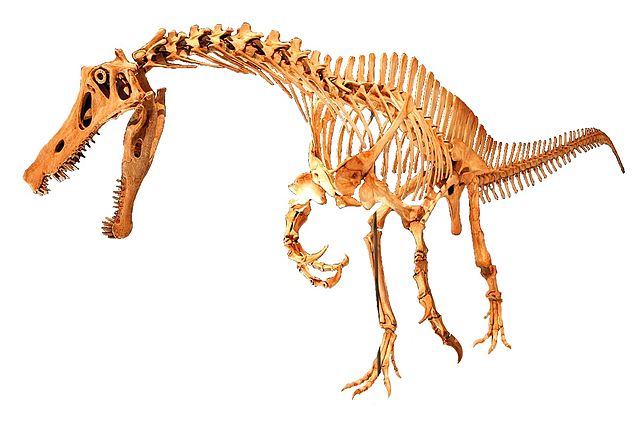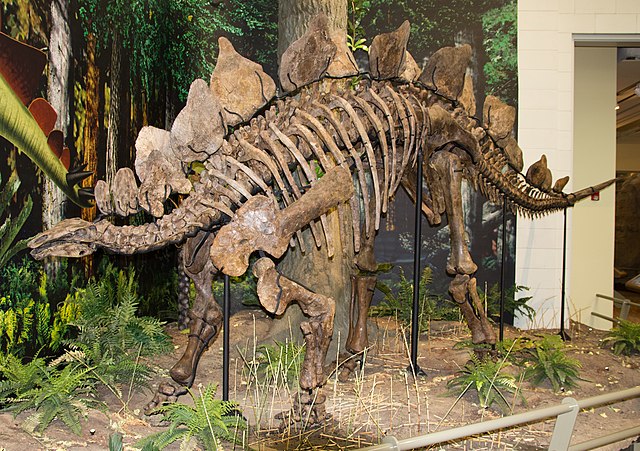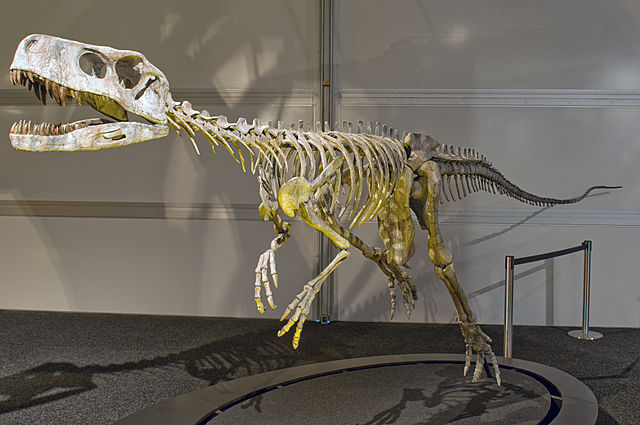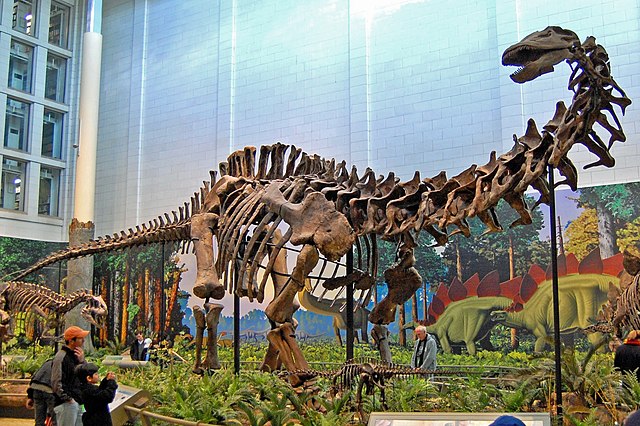Theropoda, whose members are known as theropods, is a dinosaur clade that is characterized by hollow bones and three toes and claws on each limb. Theropods are generally classed as a group of saurischian dinosaurs. They were ancestrally carnivorous, although a number of theropod groups evolved to become herbivores and omnivores. Theropods first appeared during the Carnian age of the late Triassic period 231.4 million years ago (Ma) and included the majority of large terrestrial carnivores from the Early Jurassic until at least the close of the Cretaceous, about 66 Ma. In the Jurassic, birds evolved from small specialized coelurosaurian theropods, and are today represented by about 10,500 living species.
Image: Carnotaurus skeleton in Bonn White Background
Image: Coelophysis (1) white background
Image: Stan T. rex in Oslo white background
Image: Irritator challengeri mount 01 white background
Dinosaurs are a diverse group of reptiles of the clade Dinosauria. They first appeared during the Triassic period, between 243 and 233.23 million years ago (mya), although the exact origin and timing of the evolution of dinosaurs is a subject of active research. They became the dominant terrestrial vertebrates after the Triassic–Jurassic extinction event 201.3 mya and their dominance continued throughout the Jurassic and Cretaceous periods. The fossil record shows that birds are feathered dinosaurs, having evolved from earlier theropods during the Late Jurassic epoch, and are the only dinosaur lineage known to have survived the Cretaceous–Paleogene extinction event approximately 66 mya. Dinosaurs can therefore be divided into avian dinosaurs—birds—and the extinct non-avian dinosaurs, which are all dinosaurs other than birds.
Image: Stegosaurus ungulatus
Image: Frenguellisaurus ischigualastensis DSC 6185
Image: Triceratops Specimen at the Houston Museum of Natural Science
Image: Louisae








